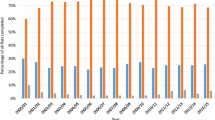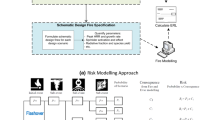Abstract
In the United Kingdom, as in most other countries, the required fire resistance period of a building is traditionally given by the recommendations of prescriptive documents, such as the Approved Document B, depending on the usage and the height of the building. However, for large developments like stadia and arenas, which involve different usages such as assembly, office and retail facilities in combination with a very large number of people and the significance of this type of structure to the communities, these simple rules given in the prescriptive guidance to fire safety are not applicable. Furthermore, structural fire protection forms a significant part of the cost of a structure and also plays a significant part in the environmental impact and the embodied energy. Therefore, a risk based approach to the fire resistance requirements of large stadia and arenas has been developed and validated in this paper to ensure that the appropriate standard of safety is achieved in the most appropriate and economic manner. The approach allows a detailed assessment of the risk of failure of individual elements of structure and structural systems in a stadium rather than specifying a single fire resistance period for the whole building, which might be overly conservative for some members, but potentially unsafe for critical elements. The approach also allows for investigating the influence of individual parameters such as management, and the fire load. The method ensures that all three risk parameters i.e. frequency, probability, consequence will be assessed for the different structural elements based on available data from similar buildings, calculations and experiences. It could be shown that the proposed method gives consistent and comparable results for office, retail and assembly buildings, if compared with the recommendations given in the British Standard BS9999. It should be noted that the approach is based on the principles of risk; however it is semi-quantitative, and as a result contains some subjectivity. Therefore, it is important that the results are assessed for consistency and that they are logical and explainable.
Similar content being viewed by others
References
British Standards Institution, DD9999: (2005). Code of practice for fire safety in the design, construction and use of buildings, British Standards Institution, London.
Kirby, Newman, Butterworth, Pagan, English, (October 2003). A new approach to specifying fire resistance periods, The Structural Engineer — Volume 82 — Issue 19 pp 34–37, Institution of Structural Engineers, London.
Vulcan Solutions Ltd, Webpage: http://www.vulcan-solutions.co.uk/
BSI, BSEN1991-1-2: (2002). Eurocode 1: Actions on structures: Part 1-2: General Actions-Actions on structures exposed to fire, European Committee for Standardisation.
NBS, (2007). Approved Document B-Fire safety, Volume 2 — Buildings other than Dwellinghouses, The Building Regulations 2000, UK.
Author information
Authors and Affiliations
Corresponding author
Rights and permissions
About this article
Cite this article
Block, F.M., Butterworth, N.A. The definition of fire resistance requirements for stadium and arena developments based on risk. Int J Steel Struct 9, 39–46 (2009). https://doi.org/10.1007/BF03249478
Received:
Accepted:
Issue Date:
DOI: https://doi.org/10.1007/BF03249478




